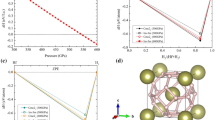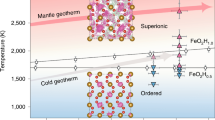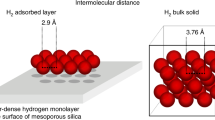Abstract
IT has been suggested1,2 that the temperatures of some interstellar grains may be low enough for the condensation of solid hydrogen on their surfaces. The questions of grain temperature and vapour pressure of solid hydrogen are re-examined here, and it seems highly unlikely that a significant amount of solid hydrogen can exist in interstellar space.
This is a preview of subscription content, access via your institution
Access options
Subscribe to this journal
Receive 51 print issues and online access
$199.00 per year
only $3.90 per issue
Buy this article
- Purchase on SpringerLink
- Instant access to full article PDF
Prices may be subject to local taxes which are calculated during checkout
Similar content being viewed by others
References
Wickramasinghe, N. C., and Reddish, V. C., Nature, 218, 661 (1968).
Hoyle, F., Wickramasinghe, N. C., and Reddish, V. C., Nature, 218, 1124 (1968).
Van de Hulst, H. C., Rech. Astr. Obs. d'Utrecht, 11, part 2 (1949).
Barber, C. R., and Horsford, A., Brit. J. Appl. Phys., 14, 920 (1963).
Author information
Authors and Affiliations
Rights and permissions
About this article
Cite this article
GREENBERG, J., DE JONG, T. Can Solid Hydrogen condense on Interstellar Grains?. Nature 224, 251–252 (1969). https://doi.org/10.1038/224251a0
Received:
Revised:
Issue date:
DOI: https://doi.org/10.1038/224251a0
This article is cited by
-
Have stellar and supernovae radiations altered the pristine nature of comets?
Earth, Moon, and Planets (1990)
-
Radioactive heating and layered structure of cometary nuclei
Earth, Moon, and Planets (1988)
-
The case for life as a cosmic phenomenon
Nature (1986)
-
Unified formation of astronomical objects up to stellar mass range
Astrophysics and Space Science (1976)
-
Composition of grain mantles in interstellar clouds
Astrophysics and Space Science (1974)



